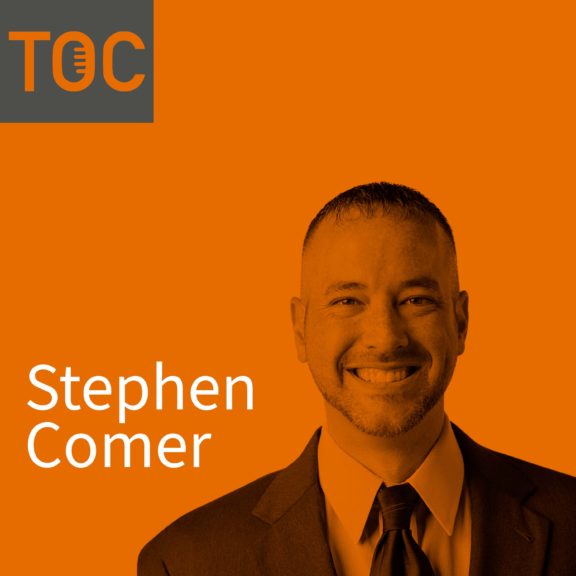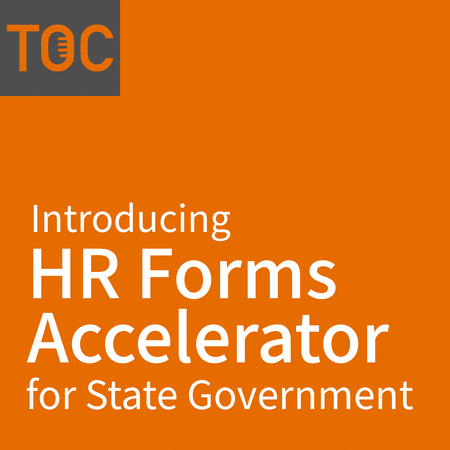This website uses cookies so that we can provide you with the best user experience possible. Cookie information is stored in your browser and performs functions such as recognising you when you return to our website and helping our team to understand which sections of the website you find most interesting and useful.
Listen now on your favorite streaming service!
presented by KeyMark


Summary
The following is a transcription from Episode 20 of The Orange Chair Podcast, “Deep Dive into OnBase for Insurance”
In this episode, we sit down with Steve Cromer, AVP for FiServ at Hyland, and Zach Hance, Account Executive for KeyMark. This episode explores how OnBase can be a benefit for the Insurance Industry.
To listen to the full episode or any other episode, you may do so by selecting your preferred podcast listening method on The Orange Chair Podcast Page.
Transcription
Host (17s): Hi everyone. Welcome back to The Orange Chair Podcast. Today’s episode is all about OnBase and insurance. So we will be talking about OnBase Document Management specifically within the Insurance Industry. And I have two very special guests on the episode today with me. So I’ll go ahead and let you guys introduce yourselves.
Steve Comer (38s): Hi everybody. My name is Steve Comer and I am the AVP for what we call the FISERV Industry here at Hyland, which encompasses our financial services and insurance industries. I’ve been with Hyland for about 16 years now and it’s truly a pleasure to sit and talk with you guys today.
Zach Hance (56s): This is Zach Hance and I’m a KeyMark account executive. I work primarily in the commercial, financial, and insurance industries. You guys may recognize my voice. I was part of the CloudCapture podcasts that we had a few months back.
Host (1m 9s): I like to start my episodes off by asking a fun fact. Can you guys tell me a fun fact about yourself?
Steve Comer (1m 15s): I always love that question because I always struggle with it, but I know you prepared us well. I think the most fun thing that I can think of for myself, which really is probably not as interesting to everybody, is I grew up playing basketball. I was a college basketball player. I’m not obviously skilled enough to avoid a career in enterprise software sales and, you know, go to the NBA, but my life was surrounded by basketball for a long time. I still enjoy playing when I can.
Host (1m 46s): What college did you play for?
Steve Comer (1m 49s): Just a small liberal arts school here in Ohio called Cedarville College, now Cedarville University.
Zach Hance (1m 56s): Alex, I think I shared this one with you on your previous podcasts. I’ll refer attendees to listen to that about me being the first baby born in 1989 and the story around that. So I’ll give you guys a new one. My first flight ever was chasing ECM (Enterprise Content Management). It was a flight to Cleveland to go to OnBase training in the dead winter. There are a lot of stories that you can ask me about how the plane landed sideways and how I learn that snow is very different down here in South Carolina.
Host (2m 28s): We get about an inch the entire year and I bet you guys up north get way more than that.
Steve Comer (2m 36s): I have a lot of conversations with customers and prospects and people thinking about planning a visit to Cleveland and they’re always scared to do it in the wintertime. I try and encourage them there is snow and it does get cold but that it’s not as bad as it sounds. And then I think Zach just blew all my credibility right there. So I won’t take that personally.
Insurance Specific Processes
Host (3m 0s): Thank you both so much for being on the episode today. I want to go ahead and jump right into this and bring it industry-specific and ask do you find that there are a lot of insurance companies that are similar or different in terms of processes?
Steve Comer (3m 17s): First and foremost, and it’s going to sound like a weird answer, but I’m going to say both. Yes and no. The reason I answer it that way is I think at the very highest of levels, if you’re looking at everything from a 30,000-foot view, insurance companies are very similar. And when it comes specifically to processes and how they have to work it looks very much the same.
There’s intake, there’s document collection, and there’s processing that needs to be done. There are outputs in a number of different forms. At the highest level, it looks and feels very similar when you get down to where they prioritize.
I think that’s where the differences come in. That is often driven based on which segment of the industry I think we’re talking about. Just as an example, in the P & C world, a lot of the conversations that we have and a lot of the interactions that we get into are very heavily focused on the customer experience, primarily in claims processing.
That is where they look to invest technology or technology dollars. They look to make big investments to enhance that customer experience on what happens when customers have a claim and they need to get to a resolution as fast as possible. That’s where I think OnBase really has a lot of potential to shine.
If you flip over to the Life and Annuity segment, a lot of our conversations focus more on the onboarding side and the underwriting side. They need to answer questions like, “How do we get customers into our family? How do we establish them as customers? And what are those processes that they do?”
They also want to focus on the claims process, but the conversations take a little bit different path depending on who you’re talking to. That’s the broad explanation for why I say yes and no.
I would love to definitely hear Zach’s thoughts on this because I know that KeyMark is heavy with MGAs and how they view their processes. So I know Zach’s got some insight here too.
Zach Hance (5m 25s): I would completely agree with one of the first statements that you said. Speed is important with a lot of our customers. That piece of information comes in that you must work on whether that’s a new application, an endorsement, or even a cancellation. That customer service that our customers are providing to their customers is reliant on speed. That is the urgent need here. That ties into MGAs.
In the MGA space, these folks are getting requests for insurance from many different agents, and they’re going out to the carrier marketplace and getting many different quotes making it a one-to-many type of relationship. In these instances, these MGAs need to be able to get the information quickly.
Typically that is a document back to the requesting agent, as fast as possible. The agent is always going to be working on behalf of their client, the person requesting insurance.The agent is going to make a very quick decision based on what they get and the MGAs that can get the information to the agent quickest typically go with that business, so an efficient process that is a speedy process is very key across our customer base and specifically in the MGA space.
Benefits to Insurance
Host (6m 37s): You guys have touched on it a lot, but I want to get a more fine-tuned example of how one can use a tool like OnBase. How can document management be beneficial to an insurance company?
Steve Comer (6m 54s): As you look at the technologies that drive the Insurance Industry, the primary one is always going to be that core application. To name a few Guidewire, Duck Creek, etc. and there’s any number of players in the space. If you talk to an insurer, that’s the platform that is going to dictate the success or failure of their business and, to Zach’s point, how fast and responsive they can be with any platform. This is not a slam on one versus the other.
There are holes in the process and there are duplications in the process. There are steps that either can be done or need to be done that maybe the core isn’t best suited or well-suited for.
I think that’s where OnBase has the ability to come in. I use the word augment a lot. I think if you just picture it as kind of filling in the white space, I think OnBase coupled with the core system better allows and better enables insurance workers to complete their tasks and do so in the most efficient manner.
Again, sometimes it’s completing a step that isn’t necessarily taken care of by the core platform. Sometimes it’s a reduction in duplication. Sometimes there’s data entry that has to take place from one place to another, within the same application, and OnBase has the ability to help mitigate some of that duplication and share the shared data between different parts of the same system and to share data between totally agnostic systems.
To Zach’s point again, I think the word speed is probably going to be the keyword of the day if we use our Sesame Street analogy here, but anything that allows the worker to be faster for the sake of getting answers quickly or getting a resolution quicker, I think that’s where OnBase is a tremendous value add to the existing technology platforms that are out there.
Zach Hance (8m 51s): I’ll give you another word from Sesame Street that I think of is glue. When saying that, think about OnBase as that application that ties your core line of business system to potentially your portal, which may be separate from your back office system, which may be your financial system.
Oftentimes insurance companies that don’t select a document management system select just a core line of business system. It may have some inherent document management system processes, but oftentimes, they find out that it is rigid. And when I say rigid, I mean, maybe it doesn’t fit their particular underwriting needs, or maybe it doesn’t fit or give any benefit to any other department within that organization.
I’ve seen some of our larger customers try to fit in a policy and claims management system into the financial side of the business. And the financial side of the business is impacted by the rigidness of that application and how they must move invoices or payments through that process. We see OnBase as the glue that helps with these applications across all the departments, whether they’re nothing more than storing the documents and serving those up in the application or they’re the main workflow or augmenting several steps that are manual because the policy management system or claims management system can not handle those automatically.
Future of OnBase for Insurance
Host (10m 13s): Steve, I know you were talking about how, when OnBase was first started, it was very document-driven and now you guys are in this more data-driven mode. Where do you see the product going in the future?
Steve Comer (10m 27s): The fact of the matter is, and like you just said, OnBase is the flagship product of Hyland. It started out as that document-focused repository. I still think of some of the old slogans that Hyland used to use with document imagining and all that fun stuff. It really is amazing to see the transformation that the platform has gone through.
I think right now what is on the horizon for OnBase as a platform and Hyland as a whole is just carrying forward the strengths of the platform. Again, we’re not getting away from document storage, that’s never gonna go away.
Paper will always exist. I don’t care who says, we’re going to be paperless in 2050, paper is going to be around. It’s going to be minimized, but it’ll be around. You still need that content repository, but you need the workflow tools. You need the case management tools. I don’t think OnBase is ever necessarily going to navigate away from what its core capabilities have always been, but it’s going to do so in a much more modernized way.
Hyland is developing the platform and taking it to more of a cloud-first approach so that it is a cloud-native application, which then will allow the monolithic application that OnBase is today to be broken apart into more consumable microservices and is accessible through APIs with more integration capabilities, faster deployment, and faster upgrades. It’s going to always exist with its core strengths, its core capabilities, everything that has made OnBase the awesome piece of technology that it is today, but do so in a much more modernized and efficient cloud-first way.
We’re going to continue to expand the capabilities of what can actually be done with OnBase. We’ll continue to enhance workflow and case management capabilities. We’ll continue to integrate with capture and RPA and everything that is driving FinTech today. So it’s going to continue to grow in its breadth of capabilities, but it is going to get away from the kind of the old legacy architecture.
As I’m looking at what’s ahead for the platform, I’m looking at it as just a much more modernized platform that offers more scalability to a lot of our larger, midsize, and smaller customers out there.
Zach Hance (13m 9s): I don’t think I could have said it any better. I will add that there are a lot of the pieces of OnBase that make an automation solution truly awesome. You hit on some of the integrations and the APIs that are being built that are existing in the product today.
I would like to take time to mention that a lot of these integration points are being put into end-user interfaces that allow our customer’s admins to be able to build out integrations using point and click. I’m speaking of web services publishing instead of having to have that code set and that development mindset.
So when I think about OnBase in the future, yes, it’s being modernized and it is being optimized for the cloud. A lot of the integration points that are with some of the bigger systems of the major applications out there that our customer base supports within and outside insurance, those integrations are already mature with the OnBase product.
So 10 or 15 years ago, those integrations could be built. They were built on the API set, but now those have been modernized and mature to where it’s an off-the-shelf type of integration and where the integration doesn’t live with an off-the-shelf product. Some of our insurance customers have their homegrown applications. The APIs are much more robust. The web services publishing allows you to build the integration points by point and click, and make it much more effective, quicker, and cheaper to get integration set up between OnBase and the other systems.
Insurance Complexities
Host (14m 51s): You mentioned some of those complexities just now, but I wanted to know what are some other complexities that you’ve seen within the insurance industry when it comes to document managing?
Zach Hance (15m 4s): Over the past few years, we’ve seen a bigger push towards PDF being a normal file format specifically in the insurance industry, but also across our entire customer base. Steven, I’ll ask you a rhetorical question, but when’s the last time you’ve gotten a quote for something around the house from the insurance company or a contractor, and it’s come across as a TIFF image, not a PDF?
Think about all the times that you’re seeing a PDF and think about the nature of a PDF. The PDF file format was developed to be rather an uneditable file format. It was meant to be a secure format so that when a company is providing a statement of work on a contract when that PDF is generated from the word document, it’s meant to be rather difficult to make changes to the content of that document.
With our insurance base and inside the MGA space, as I mentioned, they’re going to many different carriers for the same line of business. They’re receiving many different PDFs back, and a lot of times, they need to manipulate those PDFs. So when I say manipulate, I mean, things like put stamps on there, redact certain text, black and white redaction, and add overlap text.
If you do business in one state, you get a quote for insurance from a different state, you’ve got to put state-specific language on that document that’s going out. There are a lot of external forces that are pushing the need to annotate PDFs. Well, one of the complexities here is how do you edit a PDF inside of OnBase without converting it first to a TIFF?
And the reason I say that is the complexity is over the past few years, we’ve seen these files become bigger in size with many different pages, colored logos, where the format is already large. When it comes into OnBase from the source PDF it is several megabytes and when you convert that to a TIFF and do annotations and ultimately reconvert it back to a PDF. Sometimes that’s a pretty large file format.
We talked earlier about speed. So our customers have to get one file to another outside party and every megabyte is 10 or 15 more seconds for that to be sent through the exchange server speaking specifically of outlook.
So just by nature of those individuals, having external needs to annotate the PDF and having to convert that PDF slows things down. Well, that being said KeyMark has developed our own product. It’s called Tango. It takes two to tango is a slogan there where you’re able to be inside of the OnBase client and securely by just a click of a button launch a PDF editor. We check that document out for you seamlessly.
Again, it’s secure. You’re able to annotate that PDF and any facet that you would need to like stamps, annotations, overlap, texts, you name it. And then just by clicking the save button, that document is then streamed back to OnBase automatically and stored as a revision.So that’s one complexity I’ve seen and it’s a newer tool in our tool belt that we’ve tackled and brought to the market in the insurance space. And again, that’s called Tango and it’s our PDF editor.
Steve Comer (18m 16s): There are always problems that technology can address. What I really love about everything that Zach just shared about Tango is it demonstrates specifically with KeyMark their knowledge and understanding of the space and the problems that exist and how by utilizing technology they address those issues and having technology at your fingertips to be able to address those issues. When I hear that our partners do something innovative that is in partnership with Hyland and OnBase and meeting a real need in the industry.
I think Tango is going to be a phenomenal answer to a problem that has existed for a while.
Wrap-Up
Host (19m 14s): As our time comes to a close today, are there any final thoughts that you guys have? Is there anything that you’d like to elaborate on, or maybe there’s something that I didn’t ask that you would like to touch on?
Steve Cromer (19m 20s): As I just think about the industry and where it’s going, I think about where it’s been for the last year and a half because who has not been thinking about the last year and a half over the last year and a half. What I am excited about, is that a technology like OnBase has proven to bring value really at the most critical times.
And you think about a global pandemic and how it’s impacted the industry. It has accelerated those companies in a lot of cases with their acquisition strategy. It has brought to the forefront companies that were not far enough along in their digital transformation journey. I think it has accelerated a lot of those plans.
There is good that has come out of it because it has forced a lot of companies to reconcile where they’re at and where they need to go in order to not only maintain relevance but to continue to thrive. And I feel fortunate to be working with a company and working with partners that are bringing real-world value.
I’m always excited as to what’s on the horizon and it’s always a pleasure to take a few minutes to talk about it and to partner with partners like KeyMark. So I look forward to the journey ahead, both as the technology and as the industry continues to advance
Zach Hance (20m 54s): Stephen, I echo all of that one hundred percent. You took a lot of my talking points, which was great. I’ll just say as our customer base and our prospects and anyone listening to this has any questions seeking any further information, please don’t hesitate to reach out. That’s what we’re here for and that’s how we thrive.
Host (21m 15s): Well, thank you both so much for your time today. Thank you so much for being on the podcast and sharing your inside knowledge around insurance and OnBase.
Thank you for joining us on The Orange Chair podcast. This podcast is brought to you by KeyMark and is produced by Clay Tuten and me, your host, Alex Frazier.
For more information on OnBase, please visit our website at KeyMarkInc.com/OnBase-software. Never miss an episode by subscribing to our podcast channels wherever you listen to podcasts and also like, and subscribe on Instagram and Facebook at The Orange Chair Podcast. Want to get in touch? Send us an email at TOC@KeyMarkInc.com.







